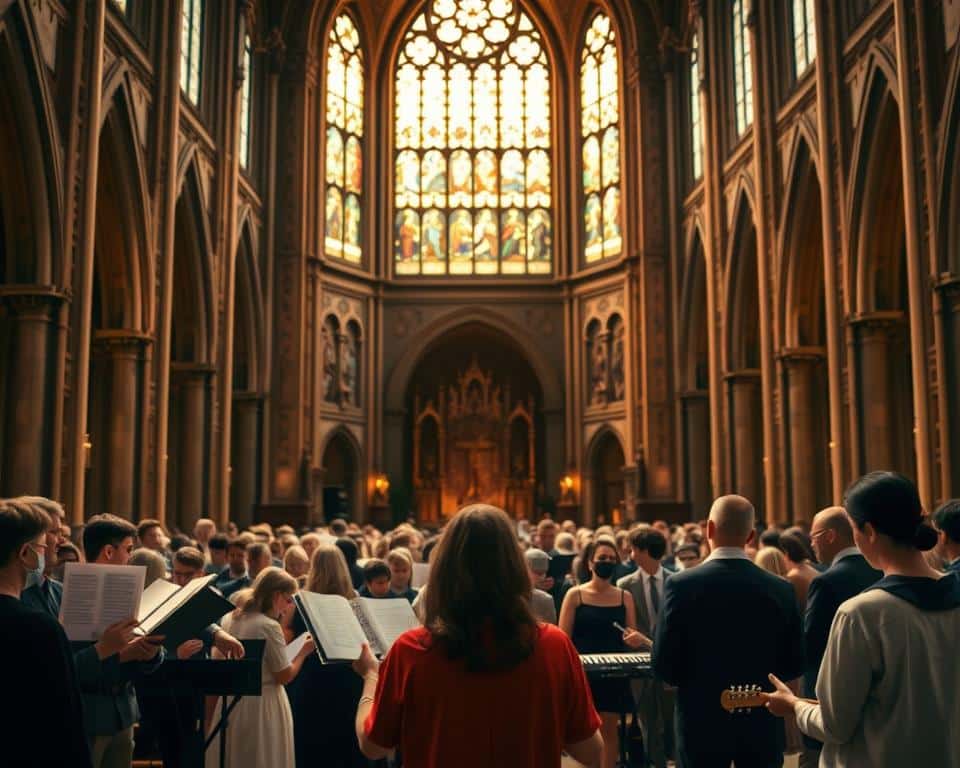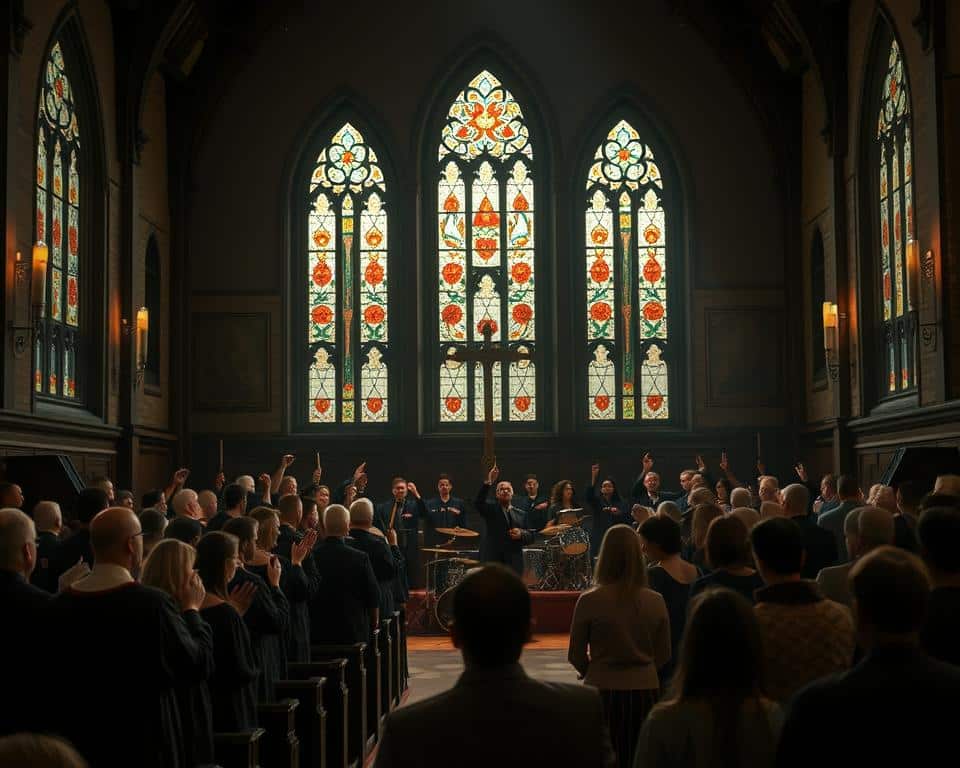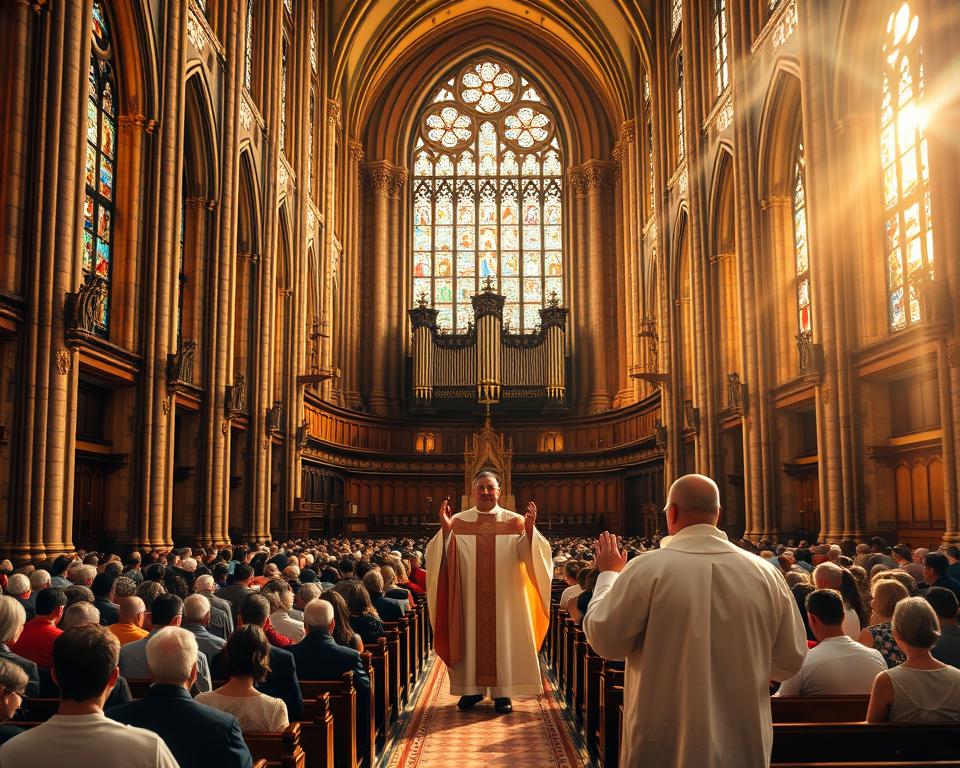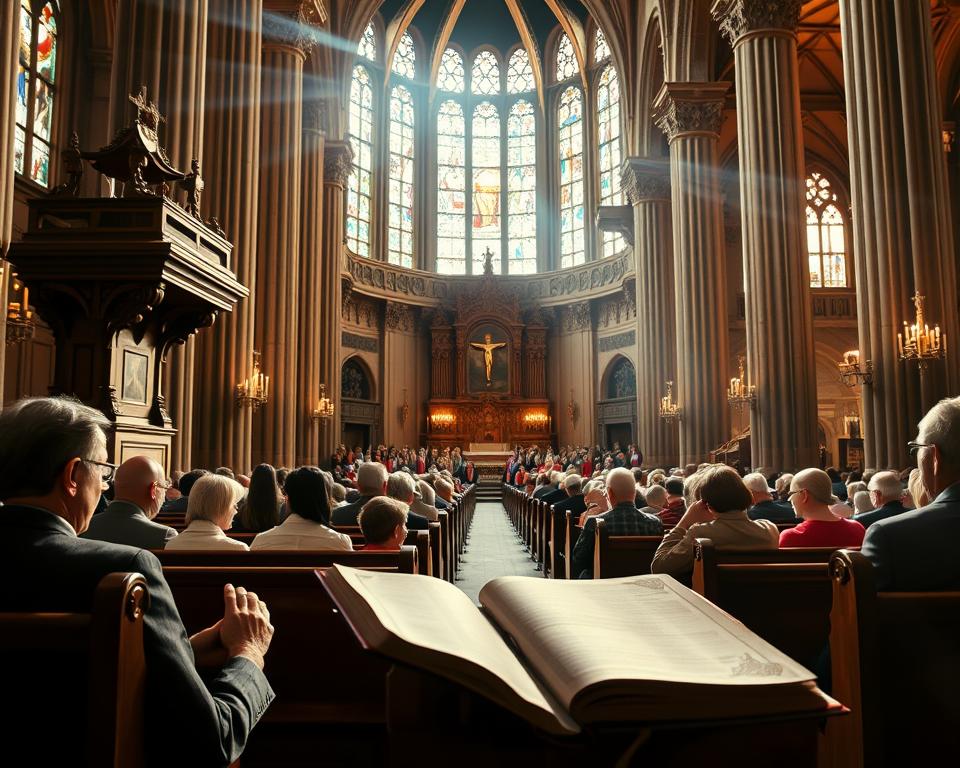“Worship is the submission of all our nature to God. It is the quickening of conscience by His holiness, the nourishment of mind with His truth, the purifying of imagination by His beauty.” — C.S. Lewis
Churches today express faith in different ways. Some follow time-honored hymns and structured liturgy. Others embrace newer music and interactive gatherings. Yet both share the same goal—preparing hearts to receive God’s word.
Labels like “traditional” or “contemporary” vary widely. What one church calls classic, another may view as outdated. The key isn’t the style but the focus: truth, Scripture, and genuine connection with God.
Younger generations are rediscovering liturgical practices. Meanwhile, many churches blend old and new elements. The message remains unchanged—worship should unite, not divide, believers.
What Is Traditional and Modern Worship?
Faith communities connect with God through different practices. Some follow structured services with centuries-old hymns and liturgy. Others embrace band-led music and a relaxed atmosphere. Both aim to honor Scripture and truth while drawing hearts closer to Christ.

Structured gatherings often feature hymnals like “How Great Thou Art.” These songs teach doctrine through lyrics, uniting congregations in confession and hope. As theologian John Witvliet notes, hymns anchor believers in shared faith.
In contrast, contemporary worship uses guitars, drums, and repetitive lyrics. This style fosters personal connection, as John Martin’s research highlights. Projected words and modern instruments create an immersive experience.
Labels like “traditional” or “contemporary” often reflect a church’s identity. What matters isn’t the style but the focus: God’s word and genuine devotion. Whether through an organ or a synth, worship should uplift and unite.
Traditional vs Modern Worship: Music and Style
Music shapes how we express faith, whether through timeless hymns or vibrant choruses. Both styles honor God’s word but differ in rhythm, tools, and focus. Let’s explore how each uplifts believers uniquely.

The Role of Hymns in Faithful Worship
Hymns like “The Old Rugged Cross” teach deep truths through lyrics. They narrate God’s faithfulness across history, grounding congregations in shared doctrine. Many churches retain these songs to connect older members and preserve theological richness.
Organs and pianos often accompany hymns, creating a reverent atmosphere. As theologian John Witvliet notes, these melodies anchor believers in collective hope. The slower tempos invite reflection on Scripture’s promises.
Contemporary Worship’s Relational Appeal
Modern music uses guitars, drums, and repetitive choruses. Lyrics often address Jesus directly, fostering personal connection. Younger generations gravitate toward this style worship for its authenticity and energy.
Research by John Martin shows these songs build unity. Projected words and upbeat tempos help congregations engage actively. Themes like grace and daily struggles resonate deeply.
Instruments and Atmosphere
Traditional services rely on the organ’s grandeur, while contemporary worship embraces bands. Neither is superior—both direct hearts toward Christ. Some churches blend styles, pairing hymns with modern arrangements.
Whether seated in pews or standing with hands raised, worshipers share one goal: glorifying God. The message remains unchanged, even as melodies evolve.
How Worship Styles Impact Church Communities
The way we worship shapes how we grow together as believers. Whether through hymns or choruses, these choices affect unity, outreach, and faith depth. Let’s explore how styles influence people and churches today.
Generational Preferences and Church Growth
Older members often find comfort in hymns tied to family revivals. These songs remind them of God’s enduring truth. Younger generations, however, crave lyrics that speak to daily struggles. Researcher John Martin notes this shift reflects a search for intimacy.
Blended services attract diverse ages but face criticism. Some argue they dilute tradition. Yet churches that balance both styles often see stronger community bonds. Projecting lyrics or updating hymn arrangements can bridge gaps.
Theological Depth vs. Emotional Connection
Hymns teach doctrine through rich lyrics like “Amazing Grace”. They ground people in shared history. Contemporary worship music, though simpler, fosters raw emotional responses. Both are valid—Scripture calls for truth and heartfelt praise.
Visual elements, like liturgical dance, enhance engagement. They make worship accessible to all ages. As one pastor shared,
“Our goal isn’t preference but connection—to God and each other.”
Ultimately, churches thrive when worship reflects their community. The message stays the same, even if the melody changes.
Finding the Worship Style That Fits Your Faith
Your faith journey deserves a way to honor God that resonates with your heart. Whether you prefer structured liturgy or vibrant choruses, focus on truth over style. As Robert Webber observed, many today rediscover ancient practices—yet what matters is sincerity.
Visit a service blending hymns and newer songs. Ask: Do the lyrics glorify God? Do they align with Scripture? Brendan Prout reminds us that unity in Christ outweighs musical preferences.
Talk to your pastor or explore a church site. Reflect each day on how music deepens your prayer life. For years, believers have found joy in diverse ways to worship—your path is unique.
Pray for guidance. God values a sincere heart above perfect styles. Let your worship draw you closer to Him, no matter the service you choose.
FAQ
What’s the main difference between hymns and contemporary worship songs?
Hymns often focus on deep theological truths with structured lyrics, while contemporary songs emphasize personal faith experiences and a more spontaneous musical style.
How do different worship styles affect church growth?
Some congregations grow by blending styles to reach multiple generations, while others thrive by staying committed to one approach that aligns with their community’s faith journey.
Are modern worship services less biblically grounded?
Not necessarily. Both styles can reflect God’s word—hymns through doctrinal richness and contemporary music through heartfelt expressions of faith.
Why do some churches use organs while others prefer bands?
Instruments reflect cultural and generational preferences. Organs symbolize tradition, while bands create an energetic atmosphere that resonates with today’s worshippers.
Can a church balance both traditional and contemporary worship?
Yes! Many churches integrate hymns and modern songs to honor Scripture while fostering unity across diverse age groups.





